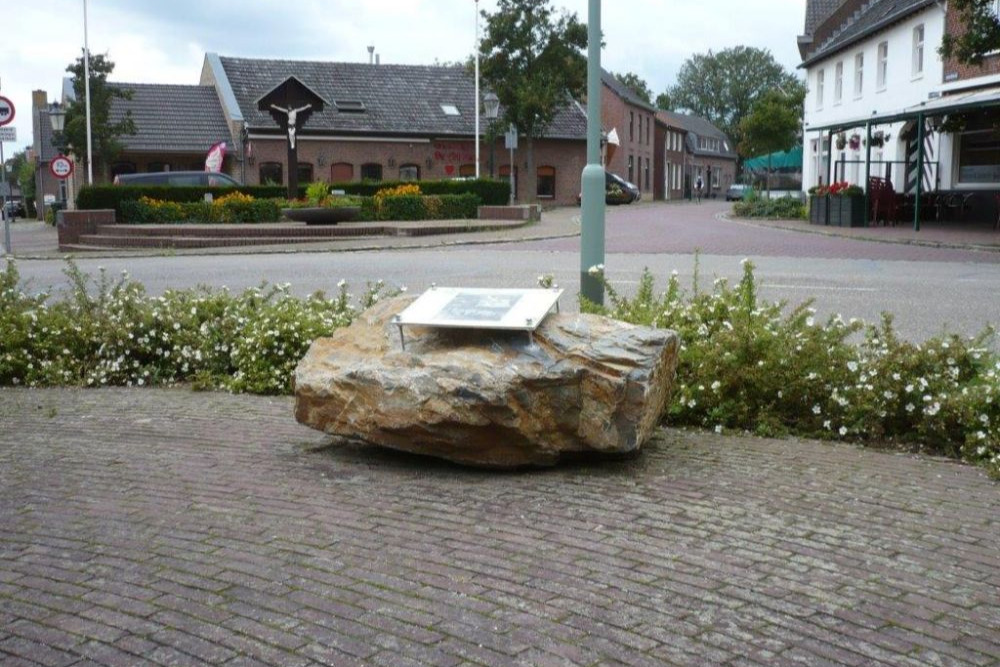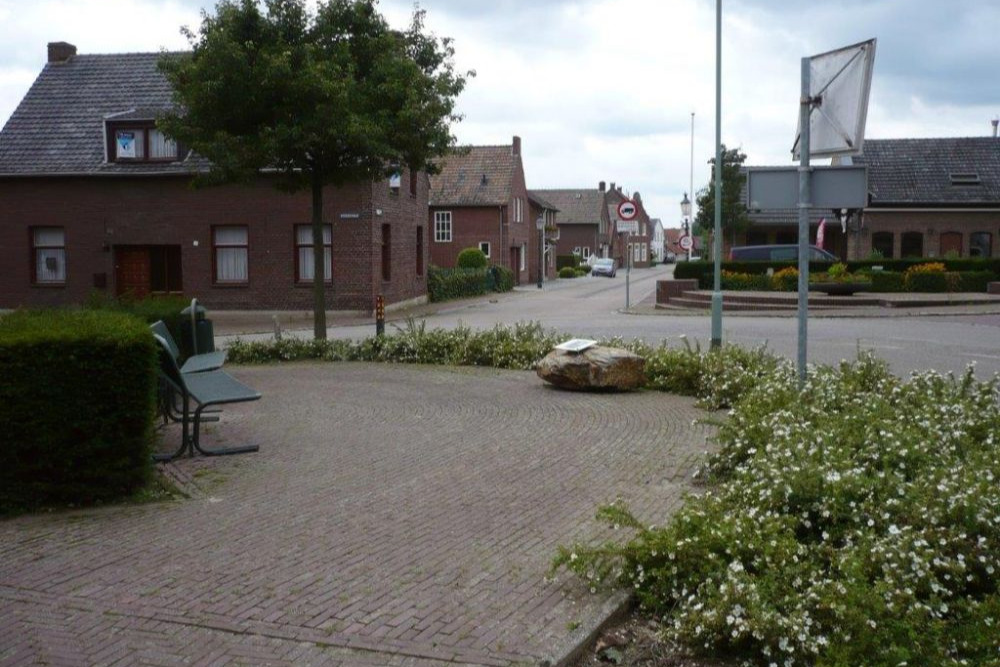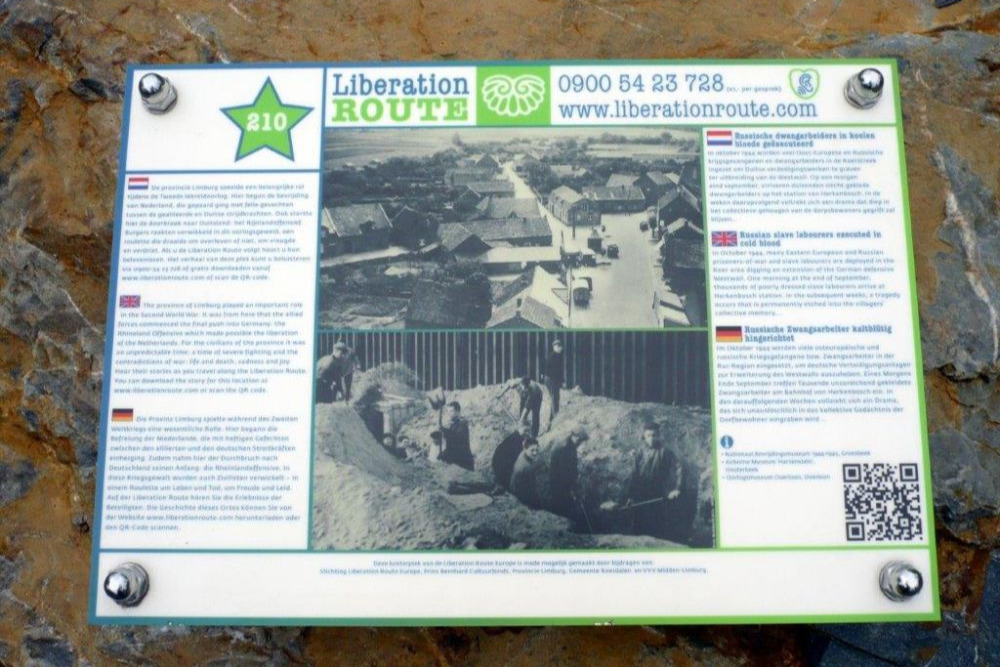Liberation Route Marker 210: Russian slave labourers executed in cold blood
Russian slave labourers executed in cold blood
In October 1944, many Eastern European and Russian prisoners-of-war and slave labourers are in the Roerstreek to work on the expansion of the German defensive position, the West Wall. One morning in late September, thousands of badly dressed slave labourers arrive at Herkenbosch station. In the subsequent weeks, a tragedy takes place that is still deeply etched in the collective memory of the villagers...
Eastern European and Russian prisoners-of-war and slave labourers were transported to the Roerstreek to dig positions for the Meuse-Rurstellung and Rurstellung (under the so-called Organisation Todt).
The Germans built these extensive fortifications in an attempt to halt the western Allies before they could reach the Ruhr. Every day, these people were forced to dig tank ditches, trenches and shelters in an attempt to create a structured defence in front of the Ruhr area, as a supplement to the famed German West Wall.
Many Eastern European women (they were mainly women) were abused and raped. Some of the local population were also forced to dig for the occupier. This is known locally as the ‘sjansen’, meaning ‘dallying’. Some of the villagers eventually learned quite a bit of Russian and some Russian women continued to live in Herkenbosch after the war.
Audiospot - Russian slave labourers executed in cold blood
Liberation Route Europe is a certified Cultural Route of the Council of Europe. With hundreds of sites and stories in nine European countries, the route links the main regions along the advance of the Allied Forces in 1943-1945.
The entire route consists of themed routes that can be travelled by by hiking, walking, cycling and car. These routes pass numerous historical and interesting sites and tell stories from a multitude of perspectives that were important in the final phase of World War II.
Many routes feature listening spots, offering the opportunity to listen to a historical story at a location. In addition, many ‘Vectors of Memory’ have been placed, indicating that the passer-by is on one of the Liberation Routes.
The routes can be found on the Liberation Route Europe website or in the app through which many stories can also be listened to.
Do you have more information about this location? Inform us!
Source
- Text: TracesOfWar & Liberation Route Europe
- Photos: Arie van Wijngaarden
Nearby
Museum
Point of interest
- Chapel O.L.V. Wijngaard Herkenbosch - Herkenbosch
- Information Sign War Victims Vlodrop - Vlodrop
- Court For Deserting Soldiers and Stealing Citizens - Effeld
Monument
- Memorial Civilian Victims Herkenbosch - Herkenbosch
- Air Crews Memorial - Herkenbosch
- Memorial Cross Execution of Russian Forced Laborers Melick - Melick
Cemetery
- Roman Catholic Cemetery Asenray - Asenray
- Dutch War Graves Municipal Cemetery "Tussen de Bergen" Roermond - Roermond
- Commonwealth War Graves Roman Catholic Cemetery Chapel in the Sand Roermond - Roermond
Remembrance Stone
- Stumbling Stones Scheidingsweg 118 - Roermond
- Stumbling Stones Kapellerlaan 60 - Roermond
- Stumbling Stones Nassaustraat 30 - Roermond







